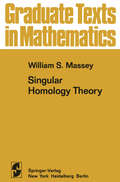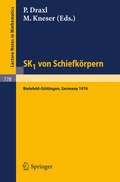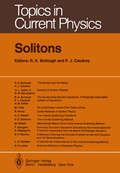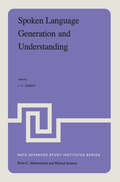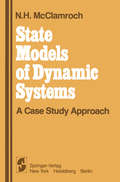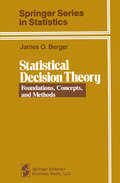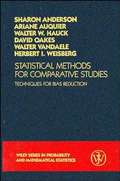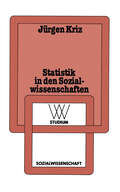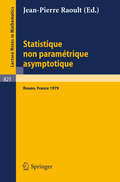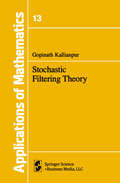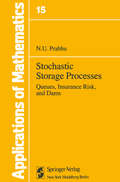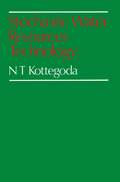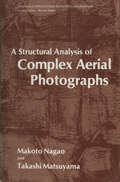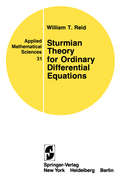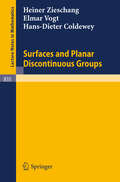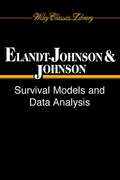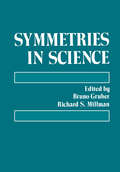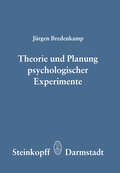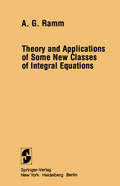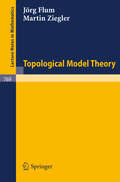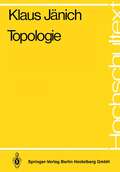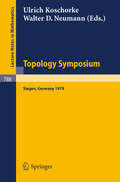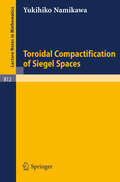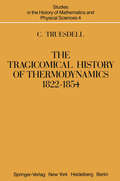- Table View
- List View
Singular Homology Theory (Graduate Texts in Mathematics #70)
by W.S. MasseyThis textbook on homology and cohomology theory is geared towards the beginning graduate student. Singular homology theory is developed systematically, avoiding all unnecessary definitions, terminology, and technical machinery. Wherever possible, the geometric motivation behind various algebraic concepts is emphasized.The only formal prerequisites are knowledge of the basic facts of abelian groups and point set topology. Singular Homology Theory is a continuation of t he author's earlier book, Algebraic Topology: An Introduction, which presents such important supplementary material as the theory of the fundamental group and a thorough discussion of 2-dimensional manifolds. However, this earlier book is not a prerequisite for understanding Singular Homology Theory.
SK1 von Schiefkörpern: Seminar Bielefeld, Göttingen, 1976 (Lecture Notes in Mathematics #778)
by P. Draxl M. KneserSolitons (Topics in Current Physics #17)
by R. K. Bullough P. J. CaudreyWith contributions by numerous experts
Spoken Language Generation and Understanding: Proceedings of the NATO Advanced Study Institute held at Bonas, France, June 26 – July 7, 1979 (Nato Science Series C: #59)
by J. C. SimonProceedings of the NATO Advanced Study Institute, Bonas, France, June 26-July 7, 1979
State Models of Dynamic Systems: A Case Study Approach
by N.H. McClamrochThe purpose of this book is to expose undergraduate students to the use of applied mathematics and physical argument as a basis for developing an understanding of the response characteristics, from a systems viewpoint, of a broad class of dynamic physical processes. This book was developed for use in the course ECE 355, Dynamic Systems and Modeling, in the Department of Electrical and Computer Engineering at the University of Michigan, Ann Arbor. The course ECE 355 has been elected primarily by junior and senior level students in computer engineering or in electrical engineering. Occasionally a student from outside these two programs elected the course. Thus the book is written with this class of students in mind. It is assumed that the reader has previous background in mathematics through calculus, differential equations, and Laplace transforms, in elementary physics, and in elemen tary mechanics and circuits. Although these prerequisites indicate the orientation of the material, the book should be accessible and of interest to students with a much wider spectrum of experience in applied mathemati cal topics. The subject matter of the book can be considered to form an introduc tion to the theory of mathematical systems presented from a modern, as opposed to a classical, point of view. A number of physical processes are examined where the underlying systems concepts can be clearly seen and grasped. The organization of the book around case study examples has evolved as a consequence of student suggestions.
Statistical Decision Theory: Foundations, Concepts, and Methods (Springer Series in Statistics)
by James BergerDecision theory is generally taught in one of two very different ways. When of opti taught by theoretical statisticians, it tends to be presented as a set of mathematical techniques mality principles, together with a collection of various statistical procedures. When useful in establishing the optimality taught by applied decision theorists, it is usually a course in Bayesian analysis, showing how this one decision principle can be applied in various practical situations. The original goal I had in writing this book was to find some middle ground. I wanted a book which discussed the more theoretical ideas and techniques of decision theory, but in a manner that was constantly oriented towards solving statistical problems. In particular, it seemed crucial to include a discussion of when and why the various decision prin ciples should be used, and indeed why decision theory is needed at all. This original goal seemed indicated by my philosophical position at the time, which can best be described as basically neutral. I felt that no one approach to decision theory (or statistics) was clearly superior to the others, and so planned a rather low key and impartial presentation of the competing ideas. In the course of writing the book, however, I turned into a rabid Bayesian. There was no single cause for this conversion; just a gradual realization that things seemed to ultimately make sense only when looked at from the Bayesian viewpoint.
Statistical Methods for Comparative Studies: Techniques for Bias Reduction (Wiley Series in Probability and Statistics #170)
by Sharon Roe Anderson Ariane Auquier Walter W. Hauck David Oakes Walter Vandaele Dr. Herbert I. WeisbergBrings together techniques for the design and analysis of comparative studies. Methods include multivariate matching, standardization and stratification, analysis of covariance, logit analysis, and log linear analysis. Quantitatively assesses techniques' effectiveness in reducing bias. Discusses hypothesis testing, survival analysis, repeated measure design, and causal inference from comparative studies.
Statistik in den Sozialwissenschaften: Einführung und kritische Diskussion (wv studium #29)
by Jürgen KrizStatistique non Parametrique Asymptotique: Actes des Journees Statistiques, Rouen, France, Juin 1979 (Lecture Notes in Mathematics #821)
by J. P. RaoultStochastic Filtering Theory (Stochastic Modelling and Applied Probability #13)
by G. KallianpurThis book is based on a seminar given at the University of California at Los Angeles in the Spring of 1975. The choice of topics reflects my interests at the time and the needs of the students taking the course. Initially the lectures were written up for publication in the Lecture Notes series. How ever, when I accepted Professor A. V. Balakrishnan's invitation to publish them in the Springer series on Applications of Mathematics it became necessary to alter the informal and often abridged style of the notes and to rewrite or expand much of the original manuscript so as to make the book as self-contained as possible. Even so, no attempt has been made to write a comprehensive treatise on filtering theory, and the book still follows the original plan of the lectures. While this book was in preparation, the two-volume English translation of the work by R. S. Liptser and A. N. Shiryaev has appeared in this series. The first volume and the present book have the same approach to the sub ject, viz. that of martingale theory. Liptser and Shiryaev go into greater detail in the discussion of statistical applications and also consider inter polation and extrapolation as well as filtering.
Stochastic Storage Processes: Queues, Insurance Risk and Dams (Stochastic Modelling and Applied Probability #15)
by Narahari U. PrabhuThis book is based on a course I have taught at Cornell University since 1965. The primary topic of this course was queueing theory, but related topics such as inventories, insurance risk, and dams were also included. As a text I used my earlier book, Queues and Inventories (John Wiley, New York, 1965). Over the years the emphasis in this course shifted from detailed analysis of probability models to the study of stochastic processes that arise from them, and the subtitle of the text, "A Study of Their Basic Stochastic Processes," became a more appropriate description of the course. My own research into the fluctuation theory for U:vy processes provided a new perspective on the topics discussed, and enabled me to reorganize the material. The lecture notes used for the course went through several versions, and the final version became this book. A detailed description of my approach will be found in the Introduction. I have not attempted to give credit to authors of individual results. Readers interested in the historical literature should consult the Selected Bibliography given at the end of the Introduction. The original work in this area is presented here with simpler proofs that make full use of the special features of the underlying stochastic processes. The same approach makes it possible to provide several new results. Thanks are due to Kathy King for her excellent typing of the manuscript.
A Structural Analysis of Complex Aerial Photographs (Advanced Applications in Pattern Recognition)
by Makoto Nagao Takashi MatsuyamaIt is most appropriate that the first volume to appear in the series "Advanced Applications in Pattern Recognition" should be this monograph by Nagao and Matsuyama. The work described here is a deep unification and synthesis of the two fundamental approaches to pat tern recognition: numerical (also known as "statistical") and struc tural ("linguistic," "syntactic"). The power and unity of the meth odology flow from the apparently effortless and natural use of the knowledge-base framework illuminated by the best results of artificial intelligence research. An integral part of the work is the algorithmic solution of many hitherto incompletely or clumsily treated problems. It was on the occasion of a laboratory visit in connection with the 4th IJCPR (of ~hich Professor Nagao was the very able Program Chairman) that I saw in operation the system described here. On the spot I expressed the desire to see the work described for the inter national technical audience in this series and the authors were kind enough to agree to contribute to a new and unknown series. With the publication of this monograph on the eve of the 5th ICPR my wish is fu1fi11~d. I want to thank here the authors and Plenum Publishing Corporation for making this volume and the series a reality.
Sturmian Theory for Ordinary Differential Equations (Applied Mathematical Sciences #31)
by William T. ReidSurfaces and Planar Discontinuous Groups (Lecture Notes in Mathematics #835)
by Heiner Zieschang Elmar Vogt Hans-Dieter ColdeweySurvival Models and Data Analysis (Wiley Series in Probability and Statistics #110)
by Regina C. Elandt-Johnson Norman L. JohnsonSurvival analysis deals with the distribution of life times, essentially the times from an initiating event such as birth or the start of a job to some terminal event such as death or pension. This book, originally published in 1980, surveys and analyzes methods that use survival measurements and concepts, and helps readers apply the appropriate method for a given situation. Four broad sections cover introductions to data, univariate survival function, multiple-failure data, and advanced topics.
Survival Models and Data Analysis (Wiley Series in Probability and Statistics #110)
by Regina C. Elandt-Johnson Norman L. JohnsonSurvival analysis deals with the distribution of life times, essentially the times from an initiating event such as birth or the start of a job to some terminal event such as death or pension. This book, originally published in 1980, surveys and analyzes methods that use survival measurements and concepts, and helps readers apply the appropriate method for a given situation. Four broad sections cover introductions to data, univariate survival function, multiple-failure data, and advanced topics.
Symmetries in Science
by Bruno GruberSouthern Illinois University at Carbondale undertook to honor Albert Einstein as scientist and as humanitarian in commemo ration of his lOOth birthday during an "Albert Einstein Centennial Week", February 23 - March 2, 1979. During the course of this week two Symposia were held, entitled "Symmetries in Science" and "Einstein: Humanities Conscience", in addition to cultural and social activities honoring Einstein. This volume presents the Symposium "Symmetries in Science". It reflects the outstanding response that was given to our "Albert Einstein Centennial Week" by the international community of scientists. The motivation to have a celebration honoring Albert Einstein at Southern Illinois University at Carbondale was supplied by Dr. Paul A. Schilpp, the editor of the "Library of Living Philo sophers". Albert Einstein has contributed to this series with his autobiographical notes, a kind of autobiography of his scientific life, in a volume entitled "Einstein: Scientist-Philosopher", the most popular among all the outstanding volumes of this series. Dr. Paul A. Schilpp's presence at Southern Illinois University at Carbondale provided a natural link for an Einstein Celebration as a kind of a continuation of the contribution he made to mankind through the Einstein volume of his "Library of Living Philosophers".
Theorie und Planung Psychologischer Experimente
by J. BredenkampWissenschaftliche Forschungsberichte Abteilung C:Psychologie Band 81
Theory and Applications of Some New Classes of Integral Equations
by Alexander G. RammThis book is intended for &tudents, research engineers, and mathematicians interested in applications or numerical analysis. Pure analysts will also find some new problems to tackle. Most of the material can be understood by a reader with a relatively modest knowledge of differential and inte gral equations and functional analysis. Readers interested in stochastic optimization will find a new theory of prac tical . importance. Readers interested in problems of static and quasi-static electrodynamics, wave scattering by small bodies of arbitrary shape, and corresponding applications in geophysics, optics, and radiophysics will find explicit analytical formulas for the scattering matrix, polarizability tensor, electrical capacitance of bodies of an arbitrary shape; numerical examples showing the practical utility of these formulas; two-sided variational estimates for the pol arizability tensor; and some open problems such as working out a standard program for calculating the capacitance and polarizability of bodies of arbitrary shape and numerical calculation of multiple integrals with weak singularities. Readers interested in nonlinear vibration theory will find a new method for qualitative study of stationary regimes in the general one-loop passive nonlinear network, including stabil ity in the large, convergence, and an iterative process for calculation the stationary regime. No assumptions concerning the smallness of the nonlinearity or the filter property of the linear one-port are made. New results in the theory of nonlinear operator equations form the basis for the study.
